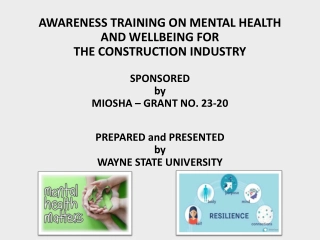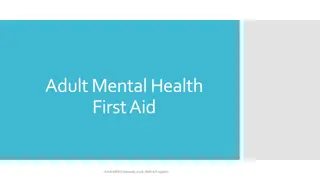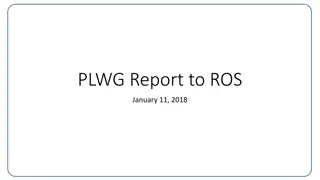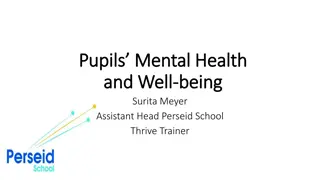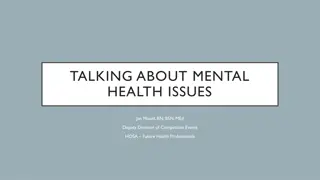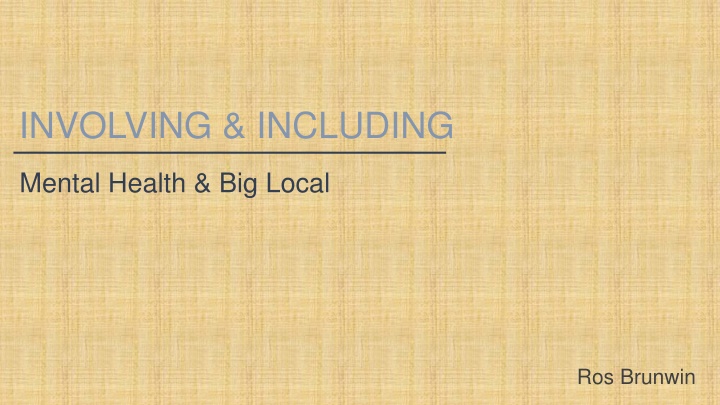
Mental Health and Support Systems
Explore the concept of mental health, factors influencing it, and ways to support individuals. Discover the impact on mood, thoughts, and behavior, and learn effective communication strategies.
Download Presentation

Please find below an Image/Link to download the presentation.
The content on the website is provided AS IS for your information and personal use only. It may not be sold, licensed, or shared on other websites without obtaining consent from the author. If you encounter any issues during the download, it is possible that the publisher has removed the file from their server.
You are allowed to download the files provided on this website for personal or commercial use, subject to the condition that they are used lawfully. All files are the property of their respective owners.
The content on the website is provided AS IS for your information and personal use only. It may not be sold, licensed, or shared on other websites without obtaining consent from the author.
E N D
Presentation Transcript
INVOLVING & INCLUDING Mental Health & Big Local Ros Brunwin
What is Mental Health? A person s condition with regard to their psychological and emotional well-being. Oxford English Dictionary Mental illness, of course, is not literally a "thing" or physical object and hence it can "exist" only in the same sort of way in which other theoretical concepts exist. Mental health is a metaphor for Problems with living. Thomas Szasz Mental health is defined as a state of well-being in which every individual realises their own potential, can cope with the normal stresses of life, can work productively and fruitfully, and is able to make a contribution to their community. World Health Organisation
What happens to people? The world around us If the bucket overflows, problems develop Experiencing life Coping Strategies let stress out Some strategies may add to stress/risk factors! Our physical selves
Lack of support POVERTY and ECONOMIC INEQUALITY GENDER Migration status Prison Drugs/Alcohol RACE LOSS of the WELFARE STATE Disability UNSTABLE HOUSING Poor education SEXUALITY and GENDER IDENTITY Care system DISCRIMINATION Unemployment Acute life events Community violence
How are people affected? Mood/ Emotions Thoughts Perception Physical body Cognition Behaviour
INVOLVING and INCLUDING
Clarity Transparency Diversity Respect Flexibility Accessibility
Language some guidance Use language that people feel comfortable with Avoid labels unless someone wants to own them Avoid diagnostic language where possible and detach people from terms (is/are/has a diagnosis of) Use common language Talk to people as people, not sufferers You will make mistakes just reflect and learn! If unsure ask people what they prefer or think Keep open body language, neutral expression, voice at a steady volume and pace in everything you do think about removing energy from the situation rather than Ask basic and open-ended questions, listen without judgement, respect people s experiences, use affirmations, reflections, summaries
THANK YOU Any questions? Ros Brunwin rosanna.brunwin8@gmail.com

